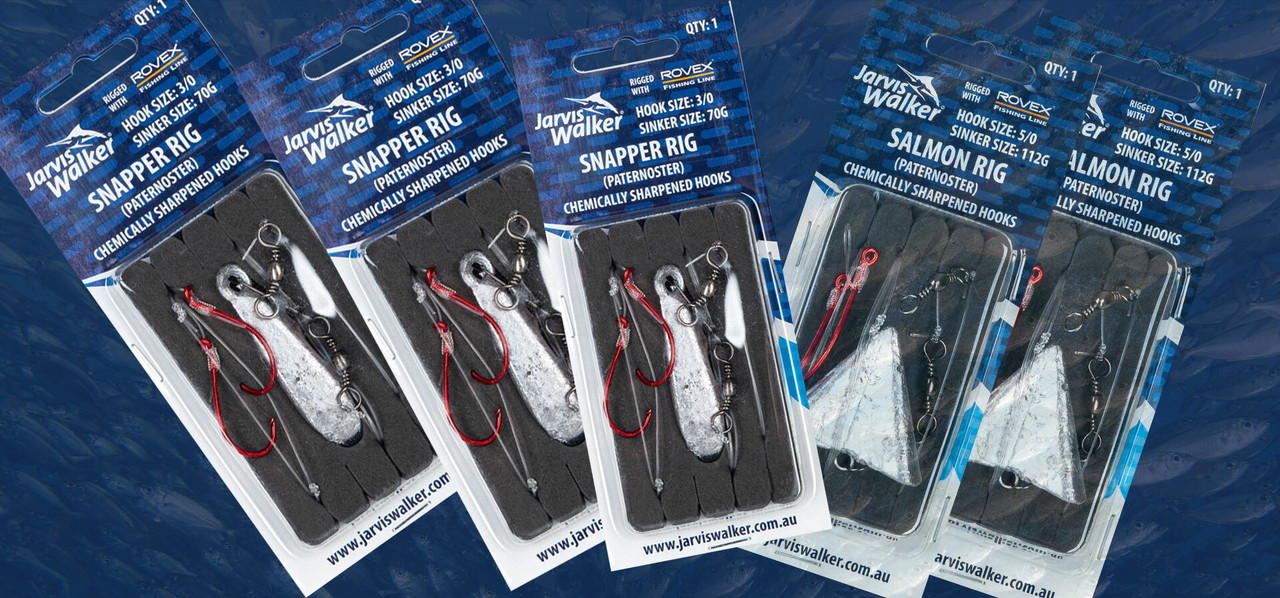A Tackle Shop Guide to Pre-Made Fishing Rigs & Bait Jigs
Buying a pre-made fishing rig can feel like a compromise, but modern pre-made rigs are a world away from the cheap, low-quality options of the past. Tied with quality hooks and leader material, they offer a huge advantage in convenience and are built to handle tough Australian fish. This guide will break down the main types of rigs and what they're for.
A Note From Our Local Experts
"One of the most common questions I get in the shop is, ‘How do I tie a fishing rig?’ I’ll often ask if they’d prefer to opt for a simple, ready-to-go solution, and the answer is usually yes. In my 20+ years, I’ve stocked a huge range of pre-made rigs, and I’ve never heard anything negative. They’re made by reputable brands who know what they’re doing.
I’ve personally used plenty of them myself. While I can tie my own knots, there are often cases where I just want to get a line in the water quickly, especially when the bite is hot. I’ve used sabiki rigs for catching yellowtail in Kiama Harbour, and for general-purpose fishing, the convenience of some of the ready tied rigs in a range of other brands that I have used is just hard to beat. They save time, and they work."
- Ben Czulowski, Owner, Fishing Tackle Shop (Ocean Storm) | 20+ years Retailing
A Guide to Pre-Made Rig Types
The secret to using pre-made rigs is matching the style to your target species and fishing environment. Here’s a breakdown of the most popular types we sell.
✔
Paternoster Rigs: This is the classic two-hook dropper rig for bottom fishing. By presenting two baits at different depths just above the sea floor, it's the number one choice for targeting a huge range of bread-and-butter species like flathead, bream, and whiting.
✔
Flasher Rigs: A flasher rig is essentially a paternoster rig with an upgrade. Each hook is dressed with flashy, UV-enhanced material that acts as a visual attractant. This makes them incredibly effective for aggressive reef species like snapper, morwong, and pearl perch.
✔
Sabiki / Bait Jigs: This is a specialised rig for one job: catching live bait. It consists of multiple, tiny hooks dressed to look like small baitfish or shrimp. When jigged through a school of baitfish like yakkas or slimy mackerel, it allows you to catch multiple baits at once.
Pro-Tips for Using Pre-Made Rigs
- The Sabiki Tangle-Free Trick: This is the most important tip for using a bait jig. Don't take all the hooks out of the packet at once. Instead, tie your main line to the top of the rig and attach a sinker to the bottom while the hooks are still in the cardboard holder. Lower the sinker over the side of the boat, and the rig will deploy itself straight down into the water, which is the best way to prevent a frustrating tangle.
- Match Your Sinker to the Rig: For a paternoster or flasher rig, choose a sinker that suits your location. Use a star sinker for the beach to hold in the sand, or a snapper lead for the boat to get down fast.
- Check Your Leader After a Toothy Critter: After landing a fish with sharp teeth like a tailor, always run your fingers down the leader material on your pre-made rig. If you feel any significant scuffs or nicks, it's safest to retire that rig and tie on a new one.
Frequently Asked Questions
How do I store my pre-made rigs to stop them from tangling?
This is a classic problem. For a simple and highly effective DIY solution, grab a piece of a pool noodle. You can secure one end of the rig with a pin and then wrap the rig tightly around the noodle, pinning the other end to keep it secure. For a more professional setup, we offer a range of dedicated rig storage solutions, like specialised tackle bags that are designed to keep your rigs organised and ready for your next trip.
Can I re-use a pre-made rig after a fishing session?
Yes, absolutely, provided you inspect it first. Always check the leader for any serious abrasion and test the hook points for sharpness. If the leader is badly scuffed or the hooks are blunt, it's best to discard the rig. A quick rinse in fresh water after use will also dramatically increase its lifespan.
What is the best bait to use on a flasher rig?
This is an excellent question. The key with a flasher rig is to not overwhelm the visual attractant. The best baits are small, tough, and scent-rich. A small strip of squid, a piece of pilchard fillet, or a sliver of tuna belly are all top choices. The goal is to add scent to the rig without covering up the flashy material, creating a perfect combination of sight and smell that reef fish find irresistible.
Do I need to add bait to a Sabiki rig?
Generally, no. A Sabiki or bait jig is designed to work without bait. The small, flashy flies or plastic shrimps on each hook are enough to trigger a bite from baitfish. However, a great pro-tip for when the bait are proving fussy is to add a tiny piece of bait (like a sliver of prawn or squid) to one or two of the hooks. This can be the difference-maker in getting the school to start feeding.



